April 2018
By Leonard S. Spector
With North Korea conducting multiple flight tests of missiles that can carry nuclear payloads to the United States and Iran testing intermediate-range missile systems at will, an observer might conclude that the current map of global missile developments shows a lawless landscape of missile proliferation run amok.
In reality, such a map reveals much the opposite: a world in which the proliferation of missiles able to deliver weapons of mass destruction (WMD) has been suppressed to a remarkable degree.
 The cornerstone of this achievement has been the international norm against the possession of WMD-capable systems established through the Missile Technology Control Regime (MTCR), now three decades old. Pyongyang and Tehran unquestionably pose grave challenges to this norm, yet even as the international community wrestles with these two difficult cases and several related missile-proliferation challenges, the MTCR norm can be expected to survive and sustain its crucial contribution to international stability.
The cornerstone of this achievement has been the international norm against the possession of WMD-capable systems established through the Missile Technology Control Regime (MTCR), now three decades old. Pyongyang and Tehran unquestionably pose grave challenges to this norm, yet even as the international community wrestles with these two difficult cases and several related missile-proliferation challenges, the MTCR norm can be expected to survive and sustain its crucial contribution to international stability.
The MTCR was established in 1987 by the members of the Group of Seven industrialized countries (Canada, France, Germany, Italy, Japan, the United Kingdom, and the United States) with the initial goal of limiting transfers, apart from manned aircraft, that could make a contribution to the delivery of nuclear weapons. This goal was subsequently expanded to limit transfers that could make a contribution to the delivery of all weapons of mass destruction, that is, nuclear, chemical, and biological weapons.
The regime was not established by treaty. Rather, it is a voluntary association of states that have agreed to implement a uniform set of standards, known as the MTCR Guidelines, governing the export of complete missiles, their major components, and related equipment and technology.1 From inception, the guidelines defined the term “missile” to include “rocket systems (including ballistic missiles, space launch vehicles, and sounding rockets) and unmanned aerial vehicle (UAV) systems (including cruise missiles, target drones, and reconnaissance drones).”2
The guidelines contained a detailed annex, which has been modified from time to time, describing the items to be restricted. The most dangerous items, subject to the most stringent restrictions, are listed under the annex’s Category I. The guidelines provide that participating governments will exercise “particular restraint” in the export of such systems, most notably complete missiles able to deliver a 500-kilogram payload to a distance of 300 kilometers or more and major components of these systems. Any license applications for the export of such systems were to be reviewed with a “presumption of denial.”3
Richard Speier, one of the key U.S. negotiators of the guidelines, has explained that these parameters “were selected because 500 kilograms is the mass of a relatively unsophisticated nuclear weapon, and 300 kilometers is the strategic distance in the most compact theaters in which nuclear weapons were deemed likely to be used.”4 The so-called 300/500 standard subsequently played an important role in restraining proliferation in a number of settings. The guidelines also declared that, until further notice, the transfer of production facilities for Category I systems would not be authorized.
Category II items included a range of equipment, material, and technologies that could contribute to Category I systems, most of which had uses other than for missiles capable of delivering nuclear weapons. The guidelines provided “greater flexibility,” but required case-by-case review and restraint in allowing their transfers.5
Strengthening the MTCR
This basic two-tier framework and the ban on the export of production facilities for Category I systems remain in force. The original guidelines, however, were strengthened in a number of important respects in 1992-1993. After post-Persian Gulf War inspections revealed that Iraq had designed warheads for a variety of missiles intended to carry chemical and biological payloads, MTCR states agreed to take steps to restrict transfers of missiles below the Category I 300/500 threshold that could carry chemical and biological payloads weighing less than the nominal 500 kilograms of a crude nuclear weapon.
This led to three changes in the guidelines and annexes. First, the MTCR partners amended the opening sentence of the guidelines to read, “The purpose of these Guidelines is to limit the risks of proliferation of weapons of mass destruction (i.e., nuclear, chemical and biological weapons), by controlling transfers that could make a contribution to delivery systems (other than manned aircraft) for such weapons.”
Second, partners added language declaring that “particular restraint” and the presumption of license denial standard would be applied not only in the case of missiles exceeding the 300/500 threshold, but would also be “exercised in the consideration of transfers of any items in the Annex, or of any [complete] missiles (whether or not in the Annex), if the [transferring country] Government judges, on the basis of all available, persuasive information…that they are intended to be used for the delivery of weapons of mass destruction.”
Finally, the MTCR members amended Annex II to add Item 19, requiring export licenses for missiles with a range of 300 kilometers or more, irrespective of payload capacity, and technology related to their development.6 These benchmarks are important for understanding the surprisingly limited number of states with missiles that exceed the original and modified MTCR 300/500 standards.
The membership of the MTCR increased rapidly during its first 10 years, growing from seven to 25 members. Currently the regime has 35 members. Admittance requires a consensus of all MTCR partners. MTCR members generally look for a prospective member’s sustained commitment to nonproliferation, as well as a track record of effective implementation of MTCR export controls. In a number of past instances, however, the United States conditioned its support for admission on the applicant’s elimination of Category I systems and, in the case of South Africa, on its termination of satellite launch vehicle programs with the potential to be converted to military purposes.7 In 2016, India was admitted without these requirements, consistent with the rules applied to certain earlier MTCR members, including France, the Soviet Union/Russia, the UK, and the United States.

In 2014 the MTCR initiated a process through which a state may become a formal unilateral adherent to the MTCR Guidelines and Annex. To attain this status, a state must notify the French MTCR Point of Contact in writing of its political commitment to control all of the items listed in the annex according to the guidelines, including any subsequent changes to those documents. Thereafter, the state is recognized on the MTCR website as a unilateral adherent. Estonia, Kazakhstan, and Latvia are the only countries to have completed this process. Certain other states, including Israel, have given the United States a pledge to adhere to the guidelines, which exempts them from potential sanctions under the U.S. Arms Export Control Act.8
China agreed to apply the MTCR Guidelines, but its application for membership remains under review because of concerns regarding its failure to implement the guidelines effectively. Finally, a number of other states, such as Cyprus and Iraq, have adopted the guidelines and annex to fulfill their obligations with respect to controlling missile-related exports under UN Security Council Resolution 1540, which requires all UN member states to control weapons of mass destruction and related materials and equipment, including systems for delivering such weapons.9
Category I Missile Proliferation
Diplomatic efforts built around MTCR standards are widely seen as having had a number of successes, including
- the termination in 1990 of the joint Argentine-Egyptian-Iraqi project to develop the Condor II;10
- Taiwan’s abandonment of its dual-capable satellite launch program in 1990;11
- Brazil’s termination of two missile programs in the early 1990s;12
- China’s decision not to transfer M-11 and M-9 missiles to Pakistan in 1992;
- the impeding of India’s development of long-range rocket systems in the 1990s;
- South Africa’s abandonment of its Aniston ballistic missile program and closely linked space launch vehicle program in 1994;13
- the elimination of a variety of Category I missiles by Eastern European states, including Bulgaria, the Czech Republic, Hungary, and Slovakia, during the 1990s and early 2000s;14
- the initial limiting of South Korea’s offensive missile program to systems with a range of less than 300 kilometers, pursuant to an agreement with the United States in 2001 (the permissible range was subsequently extended);15 and
- Libya’s agreement in 2003 to eliminate its Category I missiles, which was not fully executed until after the demise of the Qaddafi regime in 2011.16
Virtually all of these diplomatic interventions were aided by a variety of external developments, such as the changes in leadership in countries of concern, an improved security environment for some of them, the collapse of the Soviet Union, the desire of many states to become better integrated into the Western economic and security system, and the Persian Gulf War, which led to the elimination of Iraq’s missile arsenal under UN Security Council directives. Nonetheless, the existence of the MTCR and its standards enabled diplomats pursuing missile nonproliferation to exploit openings created by external events. In effect, the regime established missile nonproliferation as an international desideratum to be pursued more vigorously when opportunities arose.
These accomplishments are striking because the creators of the MTCR did not have the benefit of building on a pre-existing international treaty or well-established international norm regarding the dangers posed by unmanned delivery systems but had to create such a foundation of shared objectives. The regime had the advantage of arising during what may have been the “golden age” of WMD nonproliferation efforts.
In this regard, during the first decade of the MTCR,
- Argentina, Brazil, and South Africa joined the nuclear Nonproliferation Treaty (NPT) as non-nuclear-weapon states;
- the NPT was extended indefinitely;
- Iraq’s WMD capabilities were eliminated by mandate of the UN Security Council following the Persian Gulf War;
- Belarus, Kazakhstan, and Ukraine voluntarily relinquished Soviet-era nuclear weapons on their territory, the related missile delivery systems were destroyed, and the three countries joined the NPT as non-nuclear-weapon states;
- the U.S.-North Korean Agreed Framework froze Pyongyang’s plutonium-production capability;
- the Comprehensive Test Ban Treaty (CTBT) was concluded and opened for signature; and
- the Chemical Weapons Convention (CWC) entered into force, leading to the destruction by parties to the treaty of any existing chemical arsenals.
These developments undoubtedly facilitated a number of the successes with respect to limiting the missile systems noted above. After all, when a state renounced nuclear or chemical weapons, renouncing the systems that might have delivered them became a somewhat easier task in terms of domestic political acceptance, at least in principle. Once a state eliminated weapons of mass destruction, the MTCR’s underlying objective of suppressing the spread of WMD-armed missiles effectively was achieved there, irrespective of the fate of any missile delivery systems themselves, as long as they were not exported to another WMD holder or aspirant. This point is important in understanding the current map of missile proliferation.
China, Franc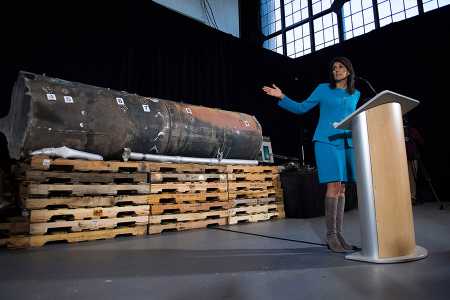 e, Russia, the UK, and the United States—the five permanent members of the UN Security Council—all possess nuclear weapons and long-range missiles to deliver them. India, North Korea, and Pakistan have declared their possession of nuclear weapons and their intent to use ballistic missiles exceeding MTCR Category I parameters currently in their possession to deliver them. Israel is widely understood to have a comparable missile-based nuclear deterrent (possibly including a Category I cruise missile), although it has never acknowledged this.17 Iran’s nuclear program created profound concerns internationally that its objective was the development of nuclear weapons, and Iran’s parallel development of a nuclear-capable intermediate-range missile was widely viewed as intended to serve as a nuclear weapons delivery system. Its nuclear program is now frozen for roughly 10 years under an agreement Iran signed with China, France, Germany, Russia, the UK, and the United States.
e, Russia, the UK, and the United States—the five permanent members of the UN Security Council—all possess nuclear weapons and long-range missiles to deliver them. India, North Korea, and Pakistan have declared their possession of nuclear weapons and their intent to use ballistic missiles exceeding MTCR Category I parameters currently in their possession to deliver them. Israel is widely understood to have a comparable missile-based nuclear deterrent (possibly including a Category I cruise missile), although it has never acknowledged this.17 Iran’s nuclear program created profound concerns internationally that its objective was the development of nuclear weapons, and Iran’s parallel development of a nuclear-capable intermediate-range missile was widely viewed as intended to serve as a nuclear weapons delivery system. Its nuclear program is now frozen for roughly 10 years under an agreement Iran signed with China, France, Germany, Russia, the UK, and the United States.
All of the regional powers mentioned above have intermediate-range ballistic missiles able to carry nuclear warheads over a distance of 1,200 kilometers. In addition, India has flight-tested a system with a range of 3,500 to 5,000 kilometers, and North Korea has demonstrated a missile with sufficient range to reach at least the western United States, some 8,000 kilometers distant.18 Syria possesses weapons of mass destruction, namely chemical weapons, probably in limited quantities as of early 2018, and Category I ballistic missiles capable of delivering them, although these missiles have not been used for this purpose in the country’s ongoing civil conflict.19
Aside from ballistic missile systems, India, Iran, Pakistan, and possibly Israel also possess cruise missiles whose ranges exceed the MTCR 300-kilometer benchmark. Research has not confirmed whether the cruise missile systems of the regional powers can carry the 500-kilogram payload associated with nuclear weapons, but all would be able to deliver chemical or biological weapons. None of these states, however, is known to have a militarized chemical or biological weapon capability.
The map of missile proliferation shows three groupings of states. The first, having weapons of mass destruction and powerful missiles, consists of 10 states: the nine possessors of nuclear weapons—China, France, India, Israel, North Korea, Pakistan, Russia, the UK, and the United States—and Syria which, like North Korea, has chemical weapons. The second group—states possessing powerful missiles but not weapons of mass destruction—include Iran, Saudi Arabia, South Korea, Taiwan (cruise missiles), Yemen, possibly Ukraine, and a few other holders of increasingly obsolete Soviet-era Scud short-range ballistic missiles.20
If the second group of states have convincingly opted out of the WMD business, their possession of Category I missiles does not pose an immediate WMD proliferation problem, although in some theaters these systems when armed with conventional warheads can be destabilizing. In addition, as long as the future of Iran’s currently contained nuclear program remains uncertain, caution dictates that efforts to constrain its access to Category I missiles must continue. The great majority of states possess neither Category I missiles nor weapons of mass destruction.
The MTCR partners have sought the elimination of Category I missiles wherever possible, sometimes making this a condition for MTCR membership. The goal of elimination of these systems is certainly worthwhile, but even where Category I systems continue to be held, much has been accomplished if weapons of mass destruction have been convincingly eliminated as a concern. With this understanding, the achievements during the MTCR era can be seen as more substantial than may be generally appreciated.
A Shifting Environment
This analysis would indicate that the most serious proliferation challenges confronting the MTCR are limited to roughly a dozen countries. In practice, however, the MTCR has rarely acted to constrain the missile capabilities of the major nuclear powers, somewhat narrowing the regime’s focus.21
The most serious setbacks the MTCR has encountered over the years have been the expansions of the ballistic missile capabilities of five states that were not MTCR members, namely Iran, Israel, North Korea, Pakistan, and, until 2016, India, along with the regime’s inability to fully curtail trade in missile technology that has contributed to several of these programs.
Since the early 2000s, the nuclear and missile programs of the most acute concern at the UN Security Council have been those of North Korea and Iran. Currently, North Korea is subject to a Security Council-imposed embargo barring transfers to it of missile-related equipment and technology, and Iran is subject to a de facto embargo of such items.22 The Security Council has taken no action directly against India, Israel, or Pakistan to restrict their nuclear or missile programs, although the council’s adoption of Resolution 1540, requiring all states to control WMD-relevant goods, could restrict the three states’ access to such items without targeting these states by name. U.S. missile nonproliferation policymakers have focused most intensively on constraining the Iranian and North Korean programs, although programs in India, Israel, and Pakistan remain subject to certain U.S. missile-related restrictions.23
From the standpoint of the MTCR, the greatest current challenges are similarly focused on Iran and North Korea, namely restricting their global procurement activities in support of their ballistic missile programs and, in particular, support for those programs provided by entities in China.
MTCR states are pursuing what might be called the “classic” technology denial strategy to constrain the leakage of technology to the two states of concern. This strategy includes intensified scrutiny of export licenses, heightened attention by customs officials at border crossings and ports, promotion of industry internal compliance programs, and the like. Such a strategy also includes engagement with transit states to counter their use by Iranian and North Korean procurement networks to disguise the ultimate destination of smuggled missile-relevant goods. Also supporting MTCR goals, the United States under the Proliferation Security Initiative has built a network of states ready to assist in interdicting suspect cargoes while in transit.24
Despite these substantial efforts, the missile capabilities of Iran and North Korea have grown steadily, in part through clandestine bilateral collaboration that is largely beyond the reach of the just-noted control mechanisms.
China’s Role
Transfers of missile technology from China to states of concern is adding to these challenges. Such transfers have posed a decades-long quandary requiring particular attention. As former Assistant Secretary of State for Nonproliferation Robert Einhorn and Gary Samore, former senior director for nonproliferation on the U.S. National Security Council staff, wrote in 2002,
China pledged to halt missile exports in 1992, 1994, 1998, and 2000. In the mid- and late 1990s, Beijing also passed laws on and strengthened bureaucratic oversight of its export controls. In spite of these steps, Chinese firms continued to transfer missile-related industrial technology to Iran, Libya, North Korea, Pakistan, and Syria. In August 2002, however, because of increased recognition of the threat that WMD posed to its own security, and after further talks with the United States, Beijing published a missile export control list that corresponded closely to the MTCR guidelines.25
Exports of Chinese missile-related goods to countries of concern continued, however, and in May 2003 the United States sanctioned China North Industries Corp. for transferring missile technology to Iran. Additionally, in September 2004, Washington imposed sanctions on the Chinese company Xinshidai, also reported as exporting missile-relevant equipment to Iran.26 Since this period, Washington has repeatedly imposed sanctions against other Chinese firms for assisting the Iranian and North Korean missile programs.27 Still, U.S. sanctioning of Chinese firms supporting the North Korean nuclear and missile program has continued, with the most recent sanctions imposed in August and September 2017.28
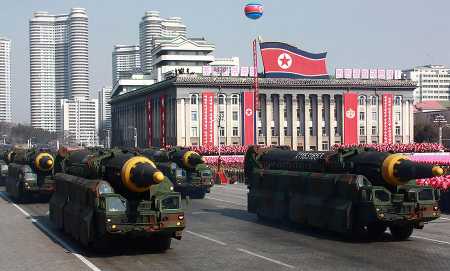 U.S. officials hesitate to accuse Beijing of pursuing a deliberate national policy of supporting missile programs in states of concern. Rather, they state that China is committed to implementing strategic trade controls but lacks the ability to effectively enforce these rules, given the vast scale of commercial activity conducted by Chinese entities.29 Nonetheless, the history of leakage of sensitive technology from China to North Korea and Iran over so many years leaves many questions unanswered regarding Beijing’s flawed implementation of its export control system.
U.S. officials hesitate to accuse Beijing of pursuing a deliberate national policy of supporting missile programs in states of concern. Rather, they state that China is committed to implementing strategic trade controls but lacks the ability to effectively enforce these rules, given the vast scale of commercial activity conducted by Chinese entities.29 Nonetheless, the history of leakage of sensitive technology from China to North Korea and Iran over so many years leaves many questions unanswered regarding Beijing’s flawed implementation of its export control system.
Sanctions Regimes
The role of the MTCR in addressing the Iranian and North Korean challenges, including the role of Chinese entities in supporting these programs, is somewhat limited at the moment and, in many respects, is overshadowed by the sanctions regimes imposed by the Security Council and the United States. At the Security Council, the principal contribution of the MTCR is the fact that the MTCR Annex is used to define what missile-related items are embargoed to both countries.
The embargoes themselves, however, are not the result of MTCR action. Indeed, the Security Council embargoes are more stringent than the MTCR Guidelines, amplifying them rather forcefully, by effectively prohibiting all transfers of items in the MTCR Annex, rather leaving the decision on approving a transfer to the discretion of the MTCR partner involved. The requirement for the inspection of all cargoes going to or from North Korea to prevent transfers of banned items, imposed by the Security Council in Resolution 2375, also goes far beyond requirements adopted in the MTCR context, as do Security Council restrictions on dealings with North Korean banks, which, among other consequences, will constrict Pyongyang’s ability to finance its procurement activities.
U.S. sanctions prohibit U.S. persons from engaging in any trade or financial activities with North Korea and expose foreign persons to asset freezes if they deal with any party sanctioned by the Security Council or the United States because of its links to North Korean nuclear or missile programs. These measures also go well beyond those adopted in the MTCR context.
Thus, it appears that the place of the MTCR in the international nonproliferation landscape is evolving. Although the scope of its missile nonproliferation rules is global, circumstances are driving the control regime toward focusing on the most salient cases, even as other actors are assuming the leading roles in addressing them. At the same time, the powerful new tools that the Security Council and the United States are bringing to bear against the advancing missile programs of Iran and North Korea are seeking to vindicate the nonproliferation principles the MTCR has placed front and center on the international stage. Champions of the regime should take considerable satisfaction from this contribution and from the state of the global map of missile proliferation.
ENDNOTES
1 Missile Technology Control Regime (MTCR), “Guidelines for Sensitive Missile-Relevant Transfers,” n.d., http://mtcr.info/guidelines-for-sensitive-missile-relevant-transfers/ (accessed March 7, 2018) (hereinafter MTCR Guidelines).
2 Some observers incorrectly state that unmanned systems other than ballistic missiles were added to the coverage of the MTCR at a later date. Later guideline changes focused solely on these systems may have given the misimpression that they were being addressed for the first time.
3 MTCR Guidelines, para. 2.
4 Richard Speier, “Missile Nonproliferation and Missile Defense: Fitting Them Together,” Arms Control Today, November 2007.
5 MTCR Guidelines, para. 1.
6 These systems were not subject to the “particular restraint”/“presumption of denial” standard unless the exporting MTCR member had reason to believe the system was intended for the delivery of weapons of mass destruction. In other cases, export licenses were to be required and restraint was to be exercised in approving such licenses. Although these control parameters are the most important modifications of the MTCR Guidelines for the discussion of missile transfers, two additional reinforcements of the guidelines deserve mention. In 1994 the group adopted a “no undercut” policy, under which partners must “consult each other before considering exporting an item on the [MTCR Annex] list that has been notified as denied by another Partner.” Further, in 2003 the partner countries agreed to a “catch-all” provision, providing for the control of exports of items not included on a control list when they may be intended for use in connection with delivery systems for weapons of mass destruction other than manned aircraft. See MTCR, “Frequently Asked Questions (FAQs),” n.d., http://mtcr.info/frequently-asked-questions-faqs/ (accessed March 7, 2018).
7 The membership criteria as they stood in 2003 required that applicants forgo offensive Category I missiles. See Congressional Research Service, “Missile Technology Control Regime (MTCR) and International Code of Conduct Against Ballistic Missile Proliferation (ICOC): Background and Issues for Congress,” RL31848, April 8, 2003, p. 7.
8 Arms Export Control Act of 1976, 22 U.S.C. § 2751.
9 UN Security Council, S/RES/1540, April 28, 2004.
10 U.S. Central Intelligence Agency, “Status of Condor II Ballistic Missile Project,” November 1, 1991, https://www.cia.gov/library/readingroom/docs/DOC_0001175541.pdf. For further background, see Federation of American Scientists, ”Missile Programs,” May 30, 2012, https://fas.org/nuke/guide/argentina/missile/index.html; Wyn Bowen, The Politics of Missile Proliferation (New York: Palgrave-MacMillan, 2000), p. 43; Youliana Ivanova, “Goodbye Missiles, Hello NATO,” Bulletin of the Atomic Scientists, Vol. 58, No. 5 (September 2002).
11 Dinshaw Mistry, Containing Missile Proliferation (Seattle: University of Washington Press, 2011), p. 97.
12 U.S. General Accounting Office, “Arms Control: U.S. Efforts to Control the Transfer of Nuclear-Capable Missile Technology,” NSIAD-90-176, June 1990, p. 16.
13 Federation of American Scientists, “Missile Technology Control Regime,” n.d., https://fas.org/nuke/control/mtcr/docs/941118-368095.htm (fact sheet released by the U.S. Arms Control and Disarmament Agency, November 18, 1994).
14 Wyn Bowen, “The MTCR and EU Expansion,” Nonproliferation Review, Spring-Summer 1998, https://www.nonproliferation.org/wp-content/uploads/npr/bowen53.pdf.
15 Alex Wagner, “South Korea, U.S. Agree on Missile Guidelines, MTCR Membership,” Arms Control Today, March 2001.
16 Jeffrey Lewis, “Libya’s Scud-B Force,” ArmsControlWonk.org, August 22, 2011, http://www.armscontrolwonk.com/archive/204383/libyas-scud-b-force/.
17 In this paper, Israel is considered to possess nuclear arms.
18 Ankit Panda and Vipin Narang, “North Korea’s ICBM: A New Missile and a New Era,” War On The Rocks, July 6, 2017, https://warontherocks.com/2017/07/north-koreas-icbm-a-new-missile-and-a-new-era/.
19 Egypt is sometimes reported as having residual stores of chemical weapons from its intervention in the 1963-1967 Yemeni civil war and a number of aging Soviet-supplied Scuds. Given the uncertainty about its possession of these items and their likely obsolescence, in this paper Egypt is considered to possess neither weapons of mass destruction nor powerful missiles.
20 See “Elbrus (SS-1C Scud B),” Military-Today.com, n.d., http://www.military-today.com/missiles/scud.htm (accessed March 8, 2018).
21 Individual MTCR partners have taken steps to avoid contributing to the missile capabilities of their respective potential adversaries within this group, but this has been undertaken through the implementation of national security measures rather than the application of MTCR rules. Conversely, some transfers of Category I systems between members of this group, such as the lease by the United States of Trident missiles to the United Kingdom, should be noted.
22 Regarding North Korea, see UN Security Council, S/RES/2087, January 22, 2013. Regarding Iran, see UN Security Council, S/RES/2231, July 20, 2015. Technically these goods are not embargoed to Iran under Resolution 2231, but any transfers of items on the MTCR Annex must be approved by the Security Council, where one or more of the veto-wielding permanent members of the body can be expected to block the transaction. See UN Security Council, S/RES/2231, July 20, 2015, annex B, sec. 4(a); UN Security Council, S/RES/2375, September 11, 2017, paras. 7-12.
23 The United States, for example, does not provide Category I items to any of the latter states. Also in 2016, Washington sanctioned seven Pakistani entities associated with its missile program for violating U.S. export controls. See Anwar Iqbal, “U.S. Sanctions Seven Pakistani Entities,” Dawn, December 31, 2016.
24 Security Council sanctions resolutions have required states to prohibit their financial institutions from engaging in transactions that support such procurement activities and, in the case of North Korea, to expel its diplomats who facilitate procurement efforts and to inspect all cargoes going to or from North Korea to prevent transfers of banned items. Although such measures to constrain the procurement of missile-related goods are not found in the MTCR Guidelines, MTCR states, as UN member states, are required by the Security Council to implement these complementary measures, among others. See UN Security Council, S/RES/2094, March 7, 2013, paras. 2, 7; UN Security Council, S/RES/2270, March 2, 2016, para. 18; UN Security Council, S/RES/2375, September 11, 2017, paras. 7-8. See also Committee Established Pursuant to Resolution 1718 (2006), “Fact Sheet Compiling Certain Measures Imposed by Security Council Resolutions 1718 (2006), 1874 (2009), 2087 (2013), 2094 (2013), 2270 (2016), 2321 (2016), 2356 (2017), 2371 (2017) and 2375 (2017),” November 3, 2017, https://www.un.org/sc/suborg/sites/www.un.org.sc.suborg/files/fact_sheet_updated_03_nov_2017.pdf.
25 Robert J. Einhorn and Gary Samore, “Ending Russian Assistance to Iran’s Nuclear Bomb,” Survival, Vol. 44, No. 2 (2002).
26 U.S. Department of the Treasury, “Recent OFAC Actions,” May 23, 2003, https://www.treasury.gov/resource-center/sanctions/OFAC-Enforcement/pages/20030523.aspx; Victor Zaborsky, “Does China Belong in the Missile Technology Control Regime?” Arms Control Today, October 2004. The article provides a detailed account of China’s unsuccessful efforts through October 2004 to join the MTCR.
27 For the current list of Chinese parties sanctioned by the U.S. Treasury Department for assisting foreign missile and nuclear programs, see “SDN List by Country,” n.d., https://www.treasury.gov/ofac/downloads/ctrylst.txt (accessed March 8, 2018).
28 U.S. Department of the Treasury, “Treasury Targets Chinese and Russian Entities and Individuals Supporting the North Korean Regime,” August 22, 2017, https://www.treasury.gov/press-center/press-releases/Pages/sm0148.aspx; U.S. Department of the Treasury, “North Korea Designations; Non-proliferation Designations Updates,” September 26, 2017, https://www.treasury.gov/resource-center/sanctions/OFAC-Enforcement/Pages/20170926_33.aspx.
29 Author discussions with U.S. officials 2016-2017, Washington, D.C. See also, Niels Rasmussen, “Chinese Missile Technology Control—Regime or No Regime?” Danish Institute of International Studies, February 2007, https://www.files.ethz.ch/isn/29608/nra_chinese_missile_technology_control.pdf.
Leonard S. Spector is executive director of the Washington office of the James Martin Center for Nonproliferation Studies at the Middlebury Institute of International Studies at Monterey. The views expressed are those of the author and do not necessarily reflect those of the James Martin Center for Nonproliferation Studies, the Middlebury Institute of International Studies, Middlebury College, or any of their sponsors.
.
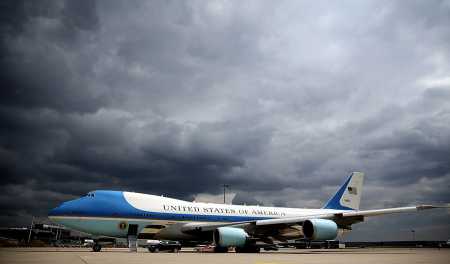 So far, Trump has not exhibited any of these traits. Nevertheless, he will soon make consequential decisions affecting the future of the successful 2015 Iran nuclear deal, the course of the North Korean nuclear crisis, and the potential for renewed strategic nuclear competition with Russia.
So far, Trump has not exhibited any of these traits. Nevertheless, he will soon make consequential decisions affecting the future of the successful 2015 Iran nuclear deal, the course of the North Korean nuclear crisis, and the potential for renewed strategic nuclear competition with Russia.





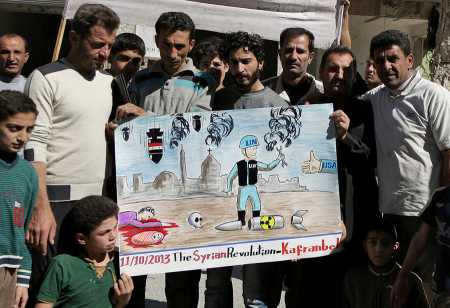 Although the international community has remained united in its condemnation of such attacks, views about the extent of Syrian governmental responsibility fuel debates within international bodies and have become increasingly fraught and reminiscent of Cold War rhetoric. Reported chemical weapons use has continued into 2018, even after the military defeat of the Islamic State group and after the Syrian government had re-established at least nominal control over most of its territory.
Although the international community has remained united in its condemnation of such attacks, views about the extent of Syrian governmental responsibility fuel debates within international bodies and have become increasingly fraught and reminiscent of Cold War rhetoric. Reported chemical weapons use has continued into 2018, even after the military defeat of the Islamic State group and after the Syrian government had re-established at least nominal control over most of its territory.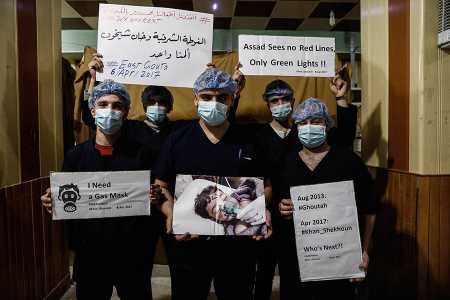 UN Security Council Resolution 2235 established the JIM on August 7, 2015, with a mandate to identify those responsible for confirmed instances of suspected chemical weapons use. Attributions of responsibility are summarized in the third, fourth, and seventh JIM reports.
UN Security Council Resolution 2235 established the JIM on August 7, 2015, with a mandate to identify those responsible for confirmed instances of suspected chemical weapons use. Attributions of responsibility are summarized in the third, fourth, and seventh JIM reports.
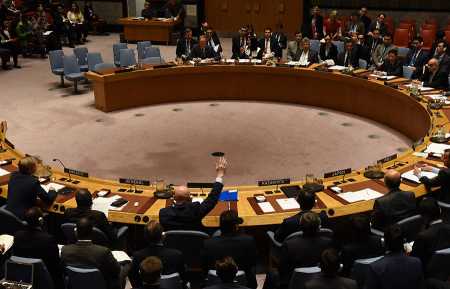 There has been broad consensus in the OPCW that enhanced forensic capabilities are desirable.
There has been broad consensus in the OPCW that enhanced forensic capabilities are desirable.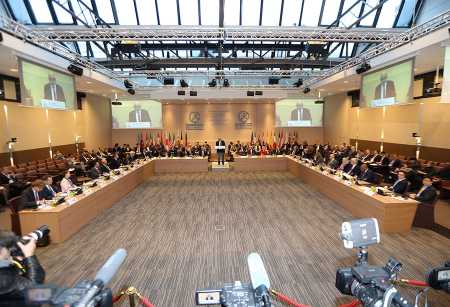 This debate is occurring in an international environment characterized by active information warfare and attempts to discredit hitherto reliable and respected information outlets in the media and in international organizations and investigation mechanisms, as well as extensive use of “alternative information outlets,” including social media.
This debate is occurring in an international environment characterized by active information warfare and attempts to discredit hitherto reliable and respected information outlets in the media and in international organizations and investigation mechanisms, as well as extensive use of “alternative information outlets,” including social media. The cornerstone of this achievement has been the international norm against the possession of WMD-capable systems established through the Missile Technology Control Regime (MTCR), now three decades old. Pyongyang and Tehran unquestionably pose grave challenges to this norm, yet even as the international community wrestles with these two difficult cases and several related missile-proliferation challenges, the MTCR norm can be expected to survive and sustain its crucial contribution to international stability.
The cornerstone of this achievement has been the international norm against the possession of WMD-capable systems established through the Missile Technology Control Regime (MTCR), now three decades old. Pyongyang and Tehran unquestionably pose grave challenges to this norm, yet even as the international community wrestles with these two difficult cases and several related missile-proliferation challenges, the MTCR norm can be expected to survive and sustain its crucial contribution to international stability.
 e, Russia, the UK, and the United States—the five permanent members of the UN Security Council—all possess nuclear weapons and long-range missiles to deliver them. India, North Korea, and Pakistan have declared their possession of nuclear weapons and their intent to use ballistic missiles exceeding MTCR Category I parameters currently in their possession to deliver them. Israel is widely understood to have a comparable missile-based nuclear deterrent (possibly including a Category I cruise missile), although it has never acknowledged this.
e, Russia, the UK, and the United States—the five permanent members of the UN Security Council—all possess nuclear weapons and long-range missiles to deliver them. India, North Korea, and Pakistan have declared their possession of nuclear weapons and their intent to use ballistic missiles exceeding MTCR Category I parameters currently in their possession to deliver them. Israel is widely understood to have a comparable missile-based nuclear deterrent (possibly including a Category I cruise missile), although it has never acknowledged this. U.S. officials hesitate to accuse Beijing of pursuing a deliberate national policy of supporting missile programs in states of concern. Rather, they state that China is committed to implementing strategic trade controls but lacks the ability to effectively enforce these rules, given the vast scale of commercial activity conducted by Chinese entities.
U.S. officials hesitate to accuse Beijing of pursuing a deliberate national policy of supporting missile programs in states of concern. Rather, they state that China is committed to implementing strategic trade controls but lacks the ability to effectively enforce these rules, given the vast scale of commercial activity conducted by Chinese entities.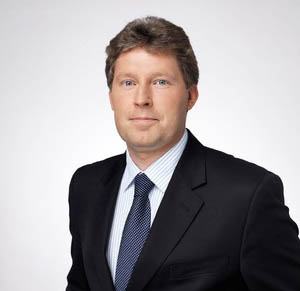 Adam Bugajski, Poland’s permanent representative to the UN Office and international organizations in Vienna, is chairman of the second session of the preparatory committee for the 2020 review conference of the nuclear Nonproliferation Treaty (NPT), being held in Geneva on April 23-May 4. These responses to questions from ACT’s Alicia Sanders-Zakre have been edited for clarity.
Adam Bugajski, Poland’s permanent representative to the UN Office and international organizations in Vienna, is chairman of the second session of the preparatory committee for the 2020 review conference of the nuclear Nonproliferation Treaty (NPT), being held in Geneva on April 23-May 4. These responses to questions from ACT’s Alicia Sanders-Zakre have been edited for clarity.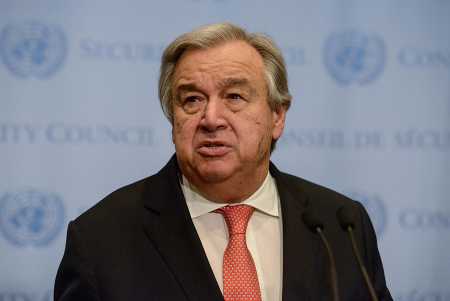 In East Asia, millions face this threat up close on a daily basis. I welcome the courageous initiatives taken by the Republic of Korea during the Olympic Games, but this is not enough. We need lasting improvements, based on the central objective of the denuclearization of the Korean peninsula and sustainable peace in the region. I also welcome the completion of reductions by the United States and the Russian Federation under the New Strategic Arms Reduction Treaty.
In East Asia, millions face this threat up close on a daily basis. I welcome the courageous initiatives taken by the Republic of Korea during the Olympic Games, but this is not enough. We need lasting improvements, based on the central objective of the denuclearization of the Korean peninsula and sustainable peace in the region. I also welcome the completion of reductions by the United States and the Russian Federation under the New Strategic Arms Reduction Treaty.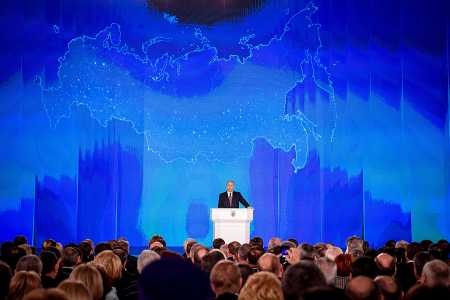 Whether Russia actually deploys all of the weapons touted by Putin remains to be seen, as many of them are still early in development. Putin also may have been blustering about Russian military capability as a way to build nationalist enthusiasm for his presidential re-election campaign amid a stagnant national economy and the absence of any major challenger.
Whether Russia actually deploys all of the weapons touted by Putin remains to be seen, as many of them are still early in development. Putin also may have been blustering about Russian military capability as a way to build nationalist enthusiasm for his presidential re-election campaign amid a stagnant national economy and the absence of any major challenger.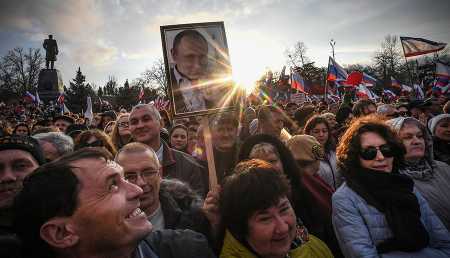 Secretary Jim Mattis played down Putin’s show. Mattis told reporters on March 10 that Putin’s nuclear weapons statements were “disappointing” and “unsurprising” but the systems he highlighted would “not change at all the strategic balance.”
Secretary Jim Mattis played down Putin’s show. Mattis told reporters on March 10 that Putin’s nuclear weapons statements were “disappointing” and “unsurprising” but the systems he highlighted would “not change at all the strategic balance.”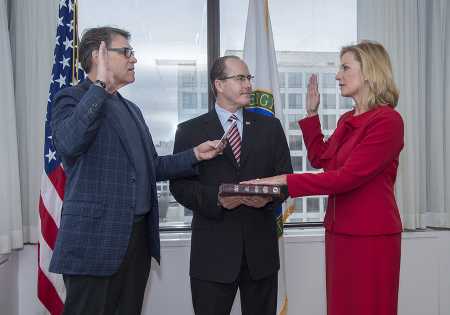 But the proposed budget for the semiautonomous National Nuclear Security Administration (NNSA), which maintains nuclear warheads and their supporting infrastructure, did not include the funds needed to modify SLBM warheads. The administration plans to modify a small number of 100-kiloton W76-1 SLBM warheads to detonate at a less powerful yield by removing the weapon’s uranium secondary core. The W76 is currently undergoing a $4 billion life extension program that is slated for completion next year.
But the proposed budget for the semiautonomous National Nuclear Security Administration (NNSA), which maintains nuclear warheads and their supporting infrastructure, did not include the funds needed to modify SLBM warheads. The administration plans to modify a small number of 100-kiloton W76-1 SLBM warheads to detonate at a less powerful yield by removing the weapon’s uranium secondary core. The W76 is currently undergoing a $4 billion life extension program that is slated for completion next year.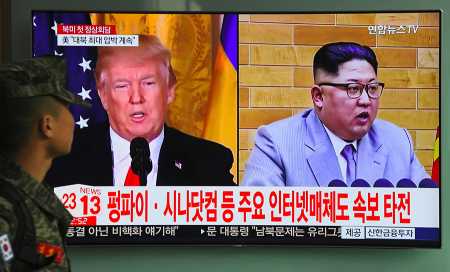 If critics of diplomacy, such as newly appointed U.S. national security adviser John Bolton, do not view a summit as making enough progress toward North Korean denuclearization, they could use the outcome as a reason to urge Trump to abandon talks and pursue a military option.
If critics of diplomacy, such as newly appointed U.S. national security adviser John Bolton, do not view a summit as making enough progress toward North Korean denuclearization, they could use the outcome as a reason to urge Trump to abandon talks and pursue a military option.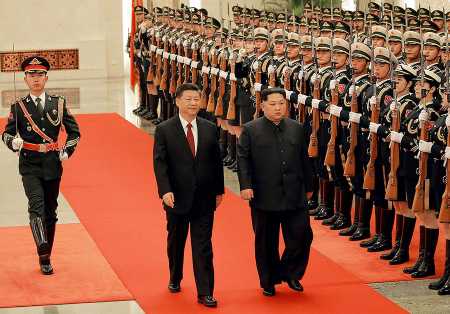 South Korea, however, built on the Olympic spirit that led to North and South Korea fielding a joint team and sent a high-level delegation to Pyongyang in early March. The two states are also planning a summit between their leaders for April that will include discussions over North Korea’s nuclear program and could help lay the groundwork for a Trump-Kim summit. South Korean President Moon Jae-in is planning to travel to Washington after his meeting with Kim.
South Korea, however, built on the Olympic spirit that led to North and South Korea fielding a joint team and sent a high-level delegation to Pyongyang in early March. The two states are also planning a summit between their leaders for April that will include discussions over North Korea’s nuclear program and could help lay the groundwork for a Trump-Kim summit. South Korean President Moon Jae-in is planning to travel to Washington after his meeting with Kim.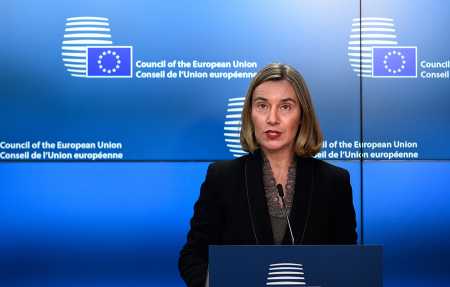 Trump threatened on Jan. 12 to withhold sanctions waivers in May, which would effectively put the United States in violation of the nuclear deal, unless the E3 and Congress act to address his concerns. (See
Trump threatened on Jan. 12 to withhold sanctions waivers in May, which would effectively put the United States in violation of the nuclear deal, unless the E3 and Congress act to address his concerns. (See 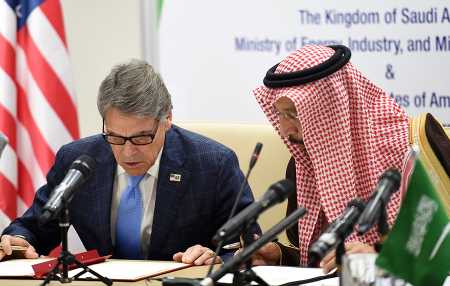 A 123 agreement, named after the section of the 1954 Atomic Energy Act that requires it, sets the terms for sharing U.S. peaceful nuclear energy technology, equipment, and materials with other countries.
A 123 agreement, named after the section of the 1954 Atomic Energy Act that requires it, sets the terms for sharing U.S. peaceful nuclear energy technology, equipment, and materials with other countries.